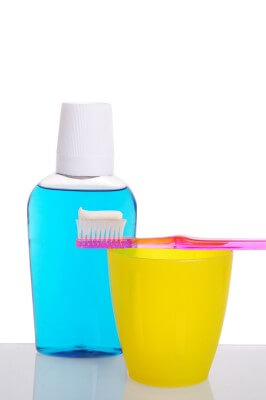 Gargle, swish and spit…many have the habit of including mouth rinses in their oral hygiene routines. Besides giving you fresh minty breath, have you ever wonder how does a mouth rinse work and the purpose of using a mouth rinse?
Gargle, swish and spit…many have the habit of including mouth rinses in their oral hygiene routines. Besides giving you fresh minty breath, have you ever wonder how does a mouth rinse work and the purpose of using a mouth rinse?
There are many types of mouth rinses in the market and it is not surprising that one of the most common questions we get asked is, how does one decide on the type and brand to buy.
Here is a list of some of the most common types of mouth rinses and their uses.
1. Mouth rinse with fluoride
These contain sodium fluoride to help control dental caries. Due to the fluoride content, they will also help in strengthening teeth. As all toothpaste and tap water in Singapore contains fluoride, brushing your teeth is sufficient and it is not necessary for the mouth rinse to contain fluoride.
2. Antiseptic mouth rinse
Look out for the ingredient ‘chlorhexidine gluconate’ – this helps in the control of plaque and gingivitis (inflammation of the gum). This type of mouth rinse is usually recommended by dentists for use post-operatively and may temporarily alter your sense of taste. However, such mouth rinses cause teeth staining and it is not encouraged for long term use.
3. Mouth rinse with alcohol content
Mouth rinses with alcohol has an antibacterial effect and gives a fresher minty breath. However, there is research that shows using too much of these mouth rinses will cause bad breath, dry mouth and even oral cancer.
4. Herbal mouth rinse
Natural ingredients like Aloe Vera and various plant extracts in the mouth rinse freshens breath and reduces bacteria in the mouth. They are especially suitable for pregnant women and kids.
5. Desensitising mouth rinse
These contain ingredients that numb nerve endings and provide effective relief from discomfort of oral sensitivity. There are many toothpastes that protect against sensitivity, which, if need be, can be used together with the mouth rinse.
6. Homemade
You can make your own mouth rinse from a mixture of salt in warm water. It is helpful especially when one is suffering a mouth/ dental infection or injury, before dental treatment is available.
Using a mouth rinse should be considered as an addition to your oral hygiene routine, and not as a replacement to regular teeth brushing and flossing. You can choose to use a mouth rinse for fresher breath, but it is important to maintain a good oral care routine which includes brushing teeth at least twice a day and flossing after each meal, and regular professional cleaning and check-up by a dentist every 6-months. Your dentist will also recommend the most appropriate mouth rinse for your oral condition.
If you have been using mouth rinses to combat constant bad breath, then you should visit a dentist to have your teeth checked as soon as possible. The bad breath may be due to a medical condition or other underlying causes that a mouth rinse cannot solve.
Please subscribe to our blog for more interesting dental related topics or ‘Like’ our Facebook page for the latest updates on our team activities.





